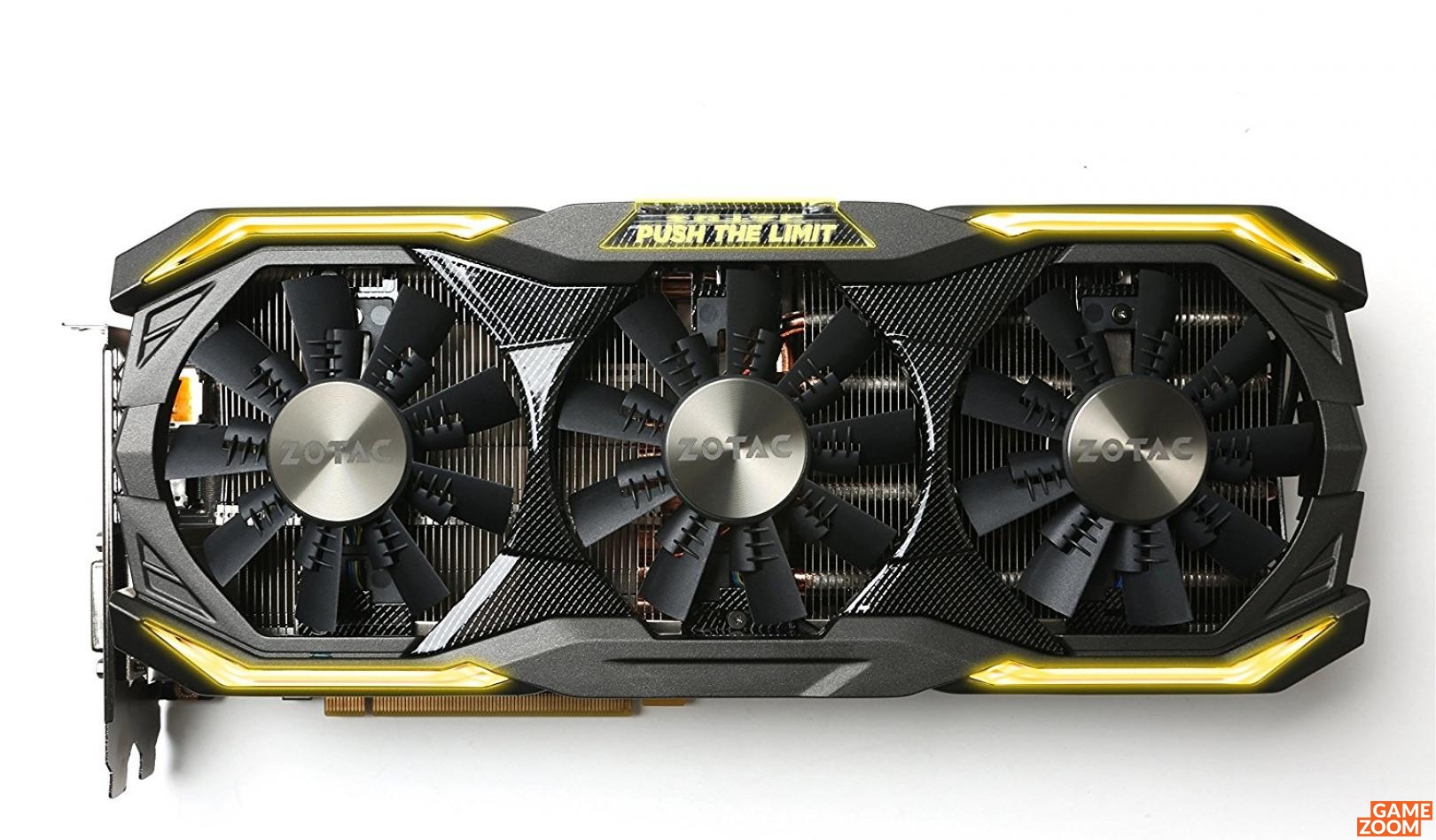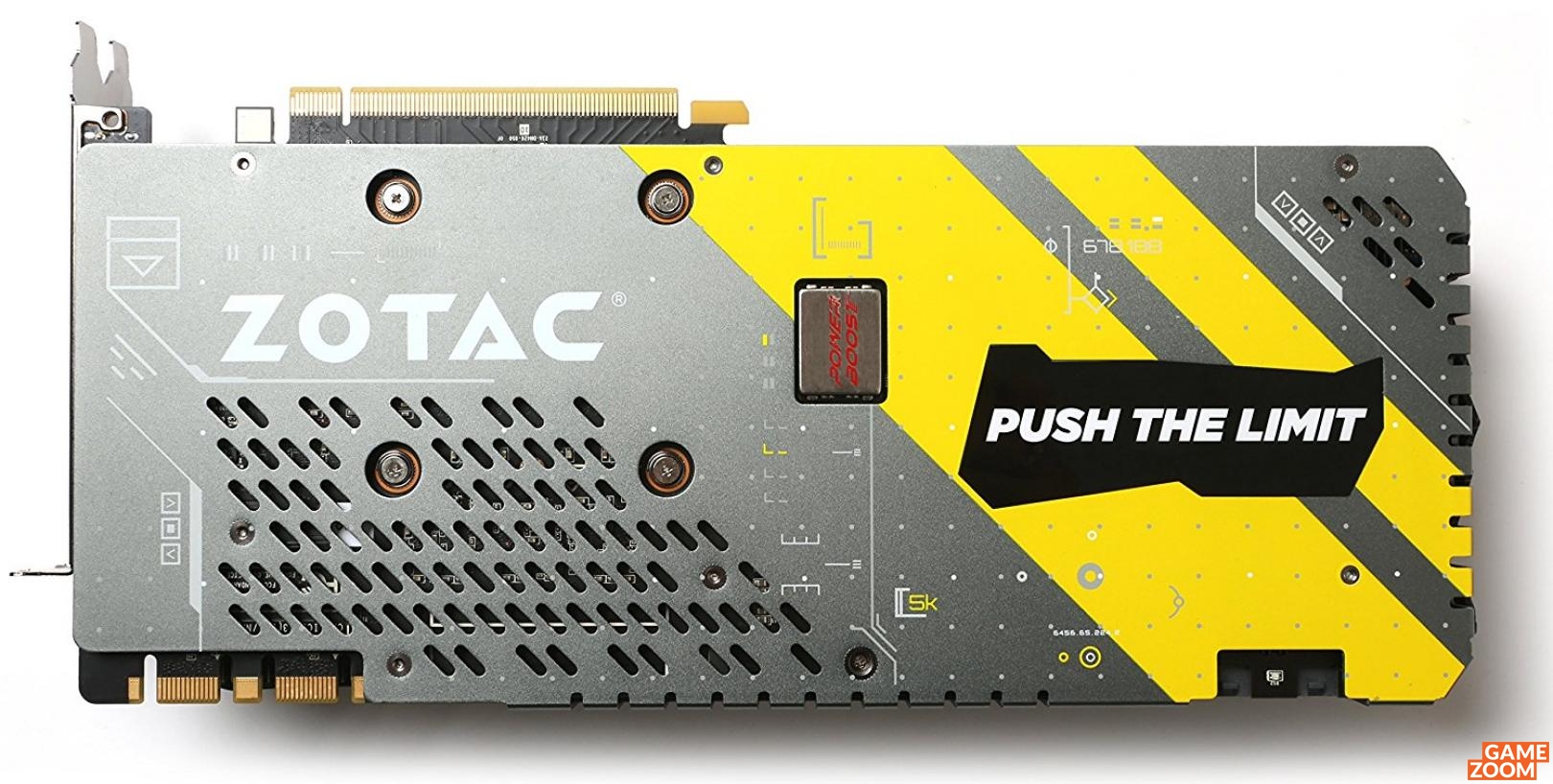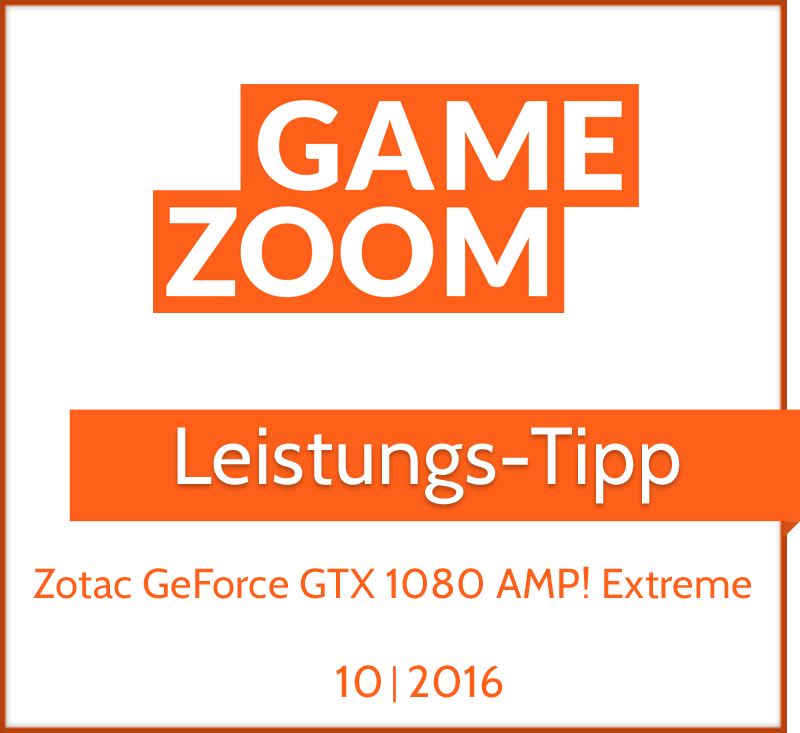
Alle Ergebnisse
Inhalt
Fakten
Hersteller
Zotac
Release
Sommer 2016
Produkt
Grafikkarte
Preis
799 Euro
Webseite
Media (5)





 Über Zotac
Über Zotac
 Gegenüber dem Referenzdesign hat Zotac ordentlich an der GPU-Taktrate geschraubt. Während NVIDIA einen Basis-Takt von 1.607 MHz vorsieht, punktet unser Testmuster mit 1.771 MHz. Der Boost-Takt liegt bei 1.911 MHz. Der Grafikspeicher taktet mit 5.400 MHz.
Gegenüber dem Referenzdesign hat Zotac ordentlich an der GPU-Taktrate geschraubt. Während NVIDIA einen Basis-Takt von 1.607 MHz vorsieht, punktet unser Testmuster mit 1.771 MHz. Der Boost-Takt liegt bei 1.911 MHz. Der Grafikspeicher taktet mit 5.400 MHz.
 Für eine Bildübertragung von 4K-/Ultra-HD-Auflösungen bei 60 Hertz stehen insgesamt drei DisplayPort-1.4- und ein HDMI-2.0b-Anschluss bereit, wobei Letzterer über HDCP 2.2 verfügt und somit verschlüsselte Signale senden und empfangen kann (4K-Blu-Rays / 4K-Streams). Auch ein DVI-Anschluss ist mit von der Partie. Auch verfügt die Karte über eine schicke RGB-Beleuchtung.
Für eine Bildübertragung von 4K-/Ultra-HD-Auflösungen bei 60 Hertz stehen insgesamt drei DisplayPort-1.4- und ein HDMI-2.0b-Anschluss bereit, wobei Letzterer über HDCP 2.2 verfügt und somit verschlüsselte Signale senden und empfangen kann (4K-Blu-Rays / 4K-Streams). Auch ein DVI-Anschluss ist mit von der Partie. Auch verfügt die Karte über eine schicke RGB-Beleuchtung.
Christoph meint: Sehr flotte 1080-Karte!
“Zotac liefert mit der GeForce GTX 1080 AMP! Extreme eine extrem schnelle und dazu leise Grafikkarte für Enthusiasten/Overclocker ab. Dank neuer Pascal-GPU bekommt man eine enorm hohe Leistung geboten - und das bei einer „humanen“ Leistungsaufnahme. Neben der beeindrucken Leistung, die selbst eine GeForce GTX 980 Ti Custom alt aussehen lässt, wissen auch Verarbeitungsqualität und Design zu gefallen. Einen großen Pluspunkt gibt es auch für das durchdachte Kühlkonzept, welches angenehm leise arbeitet. Kurz gesagt: FPS-Jäger können bedenkenlos zugreifen!

Kommentar schreiben